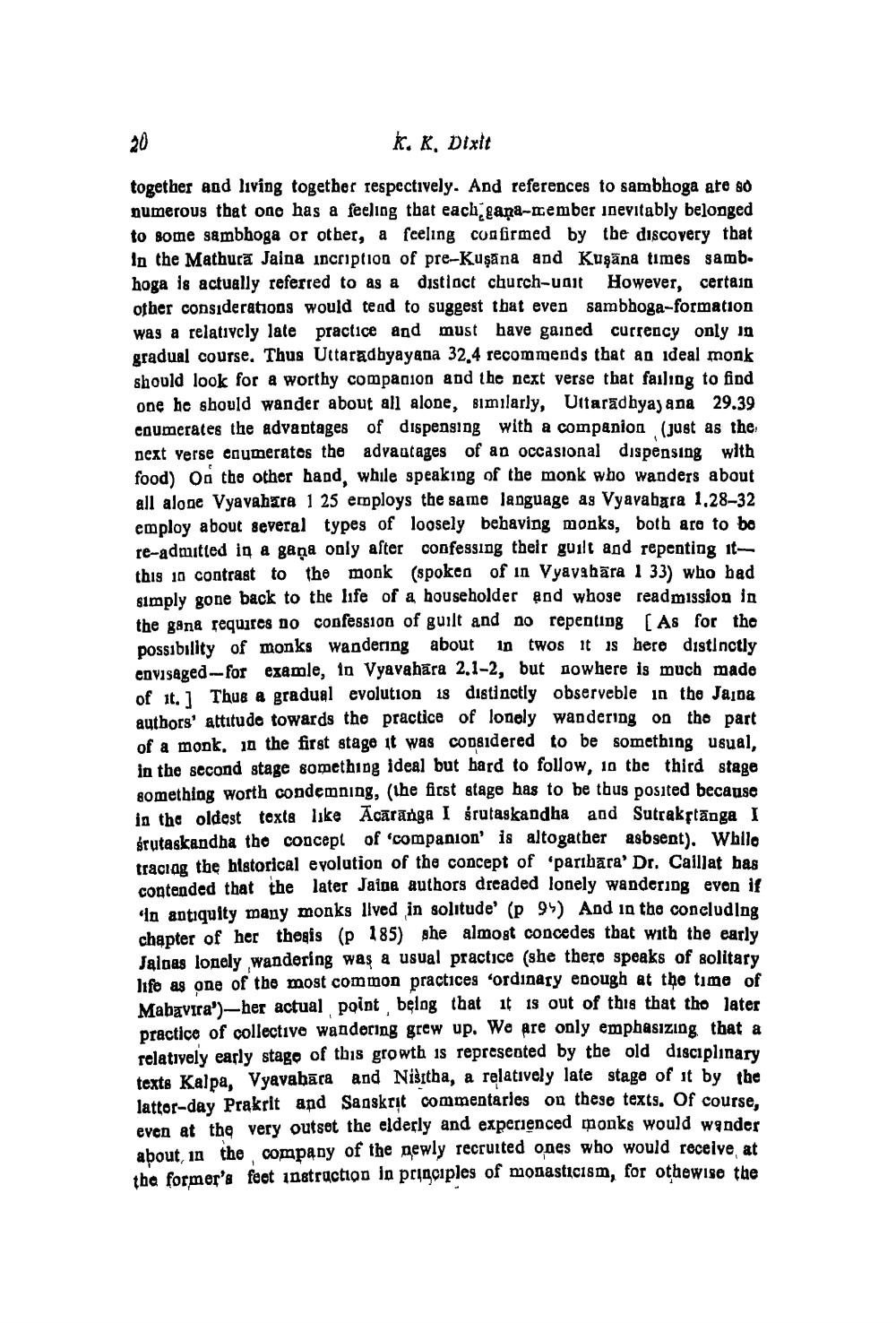________________
k. K, Dixit
together and living together respectively. And references to sambhoga ate so numerous that one has a feeling that each gana-mcember inevitably belonged to some sambhoga or other, a feeling confirmed by the discovery that In the Mathura Jaina incription of pre-Kuşāna and Kuşāna times samb. hoga is actually referred to as a distinct church-unt However, certain other considerations would tead to suggest that even sambhoga-formation was a relatively late practice and must have gained currency only in gradual course. Thus Uttaradhyayana 32.4 recommends that an ideal monk should look for a worthy companion and the next verse that failing to find one he should wander about all alone, similarly, Uttaradhyayana 29.39 coumerates the advantages of dispensing with a companion (just as the next verse enumeratos the advantages of an occasional dispensing with food) On the other hand, while speaking of the monk who wanders about all alone Vyavahara 1 25 employs the same language as Vyavabara 1.28-32 employ about several types of loosely behaving monks, both are to be re-admitted in a gana only after confessing their guilt and repenting itthis 10 contrast to the monk (spoken of in Vyavabāra 1 33) who bad simply gone back to the life of a householder and whose readmission in the gana requires no confession of guilt and no repenting [As for the possibility of monks wandering about in twos it is here distinctly envisaged--for examle, 1o Vyavahāra 2.1-2, but nowhere is much made of it. 1 Thue a gradual evolution is distinctly observeble in the Jajpa authors' attitude towards the practice of lonely wandering on the part of a monk, in the first stage it was considered to be something usual, in the second stage something ideal but hard to follow, 10 the third stage something worth condemning, (the first stage has to be thus posited because in the oldest texts like Acaranga I grutaskandha and Sutrakrtānga I šrutaskandha the concept of companion' is altogather asbsent). While traciag the historical evolution of the concept of 'paribara' Dr. Caillat bas contended that the later Jaina authors dreaded lonely wandering even if In antiquity many monks Ilved in solitude' (p95) And in the concluding chapter of her thesis (p 185) she almost concedes that with the early Jaloas lonely wandering was a usual practice (she thero speaks of solitary life as one of the most common practices ordinary enough at the time of Mabavira')—her actual point belog that it is out of this that tho later practice of collective wandering grew up. We are only emphasizing that a relatively early stage of this growth is represented by the old disciplinary texts Kalpa, Vyavabāca and Nišitha, a relatively late stage of it by the lattor-day Prakrit and Sanskrit commentaries on these texts. Of course. even at thọ very outset the elderly and experienced monks would wonder about in the company of the newly recruited ones who would receive at the former's feet instruction in principles of monasticism, for othewise the




